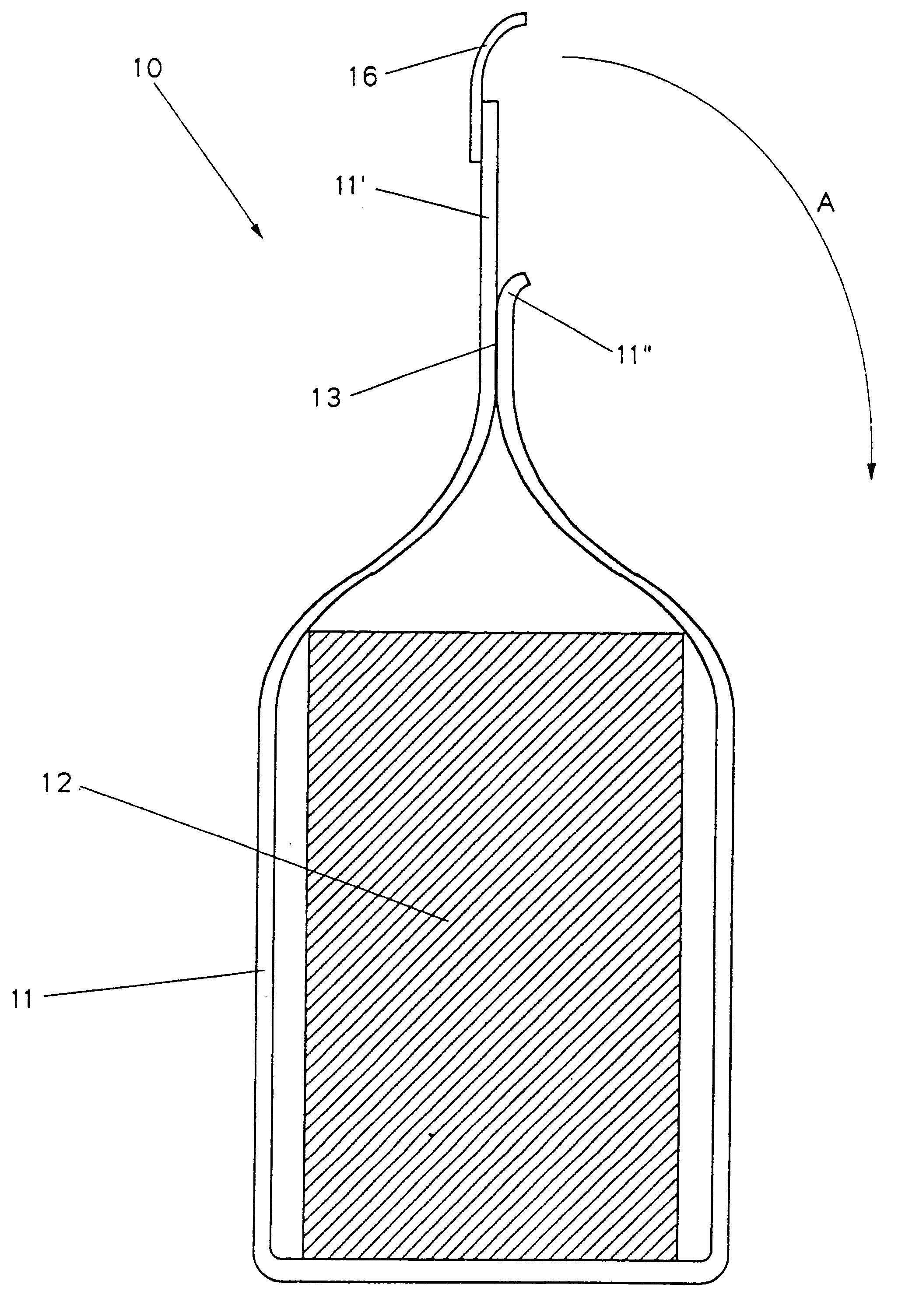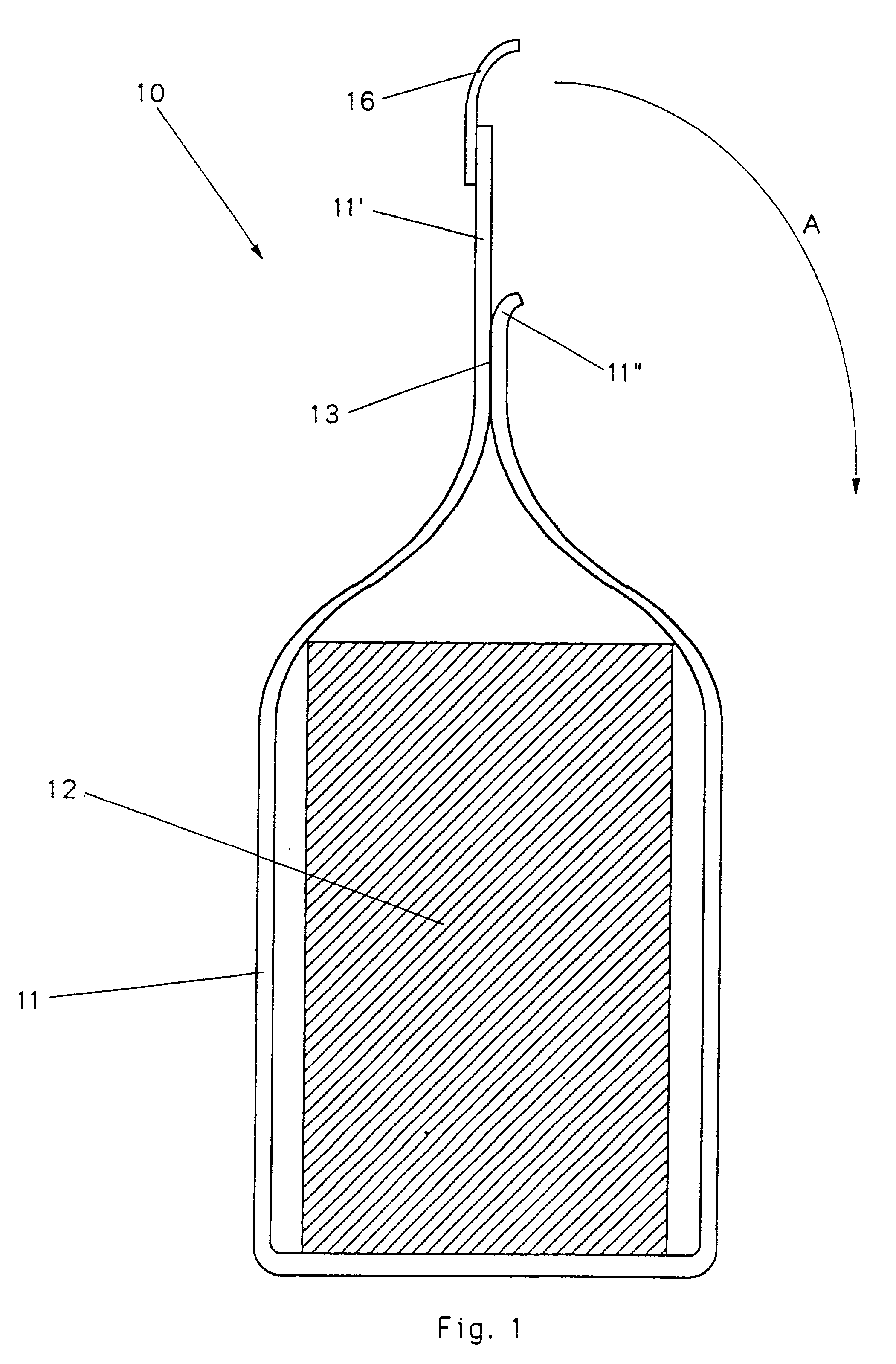Pouch or packaging for foodstuffs made of a peelable film and process for the production thereof
a technology of peelable film and foodtuffs, applied in the field of packaging, can solve the problems of difficult access, remarkably difficult, and considerable disadvantage of packaging a certain horizontally positioned product on the advancement conveyor
- Summary
- Abstract
- Description
- Claims
- Application Information
AI Technical Summary
Benefits of technology
Problems solved by technology
Method used
Image
Examples
Embodiment Construction
The present invention aims at overcoming the problems, drawbacks and disadvantages of the prior art by proposing an airtight packaging for foodstuffs in general, advantageously for cheese, said packaging being suitable for being opened with no tearing involved, said packaging further being closable more than once, in so doing safeguarding the correct preservation and keeping of the product therein contained, said packaging further having its longitudinal sealing located along one of its small faces, this making it possible for an easier reading to be made of the information relative to the product that is printed on the packaging itself.
The above aim has been accomplished thanks to putting into practice the features described in the main independent claim.
The dependent claims outline particularly advantageous forms of embodiment of the present invention.
A further aim of the present invention is to provide a process for the production of pouches or packagings for foodstuffs on an ind...
PUM
| Property | Measurement | Unit |
|---|---|---|
| thickness | aaaaa | aaaaa |
| thickness | aaaaa | aaaaa |
| thickness | aaaaa | aaaaa |
Abstract
Description
Claims
Application Information
 Login to View More
Login to View More - R&D
- Intellectual Property
- Life Sciences
- Materials
- Tech Scout
- Unparalleled Data Quality
- Higher Quality Content
- 60% Fewer Hallucinations
Browse by: Latest US Patents, China's latest patents, Technical Efficacy Thesaurus, Application Domain, Technology Topic, Popular Technical Reports.
© 2025 PatSnap. All rights reserved.Legal|Privacy policy|Modern Slavery Act Transparency Statement|Sitemap|About US| Contact US: help@patsnap.com



